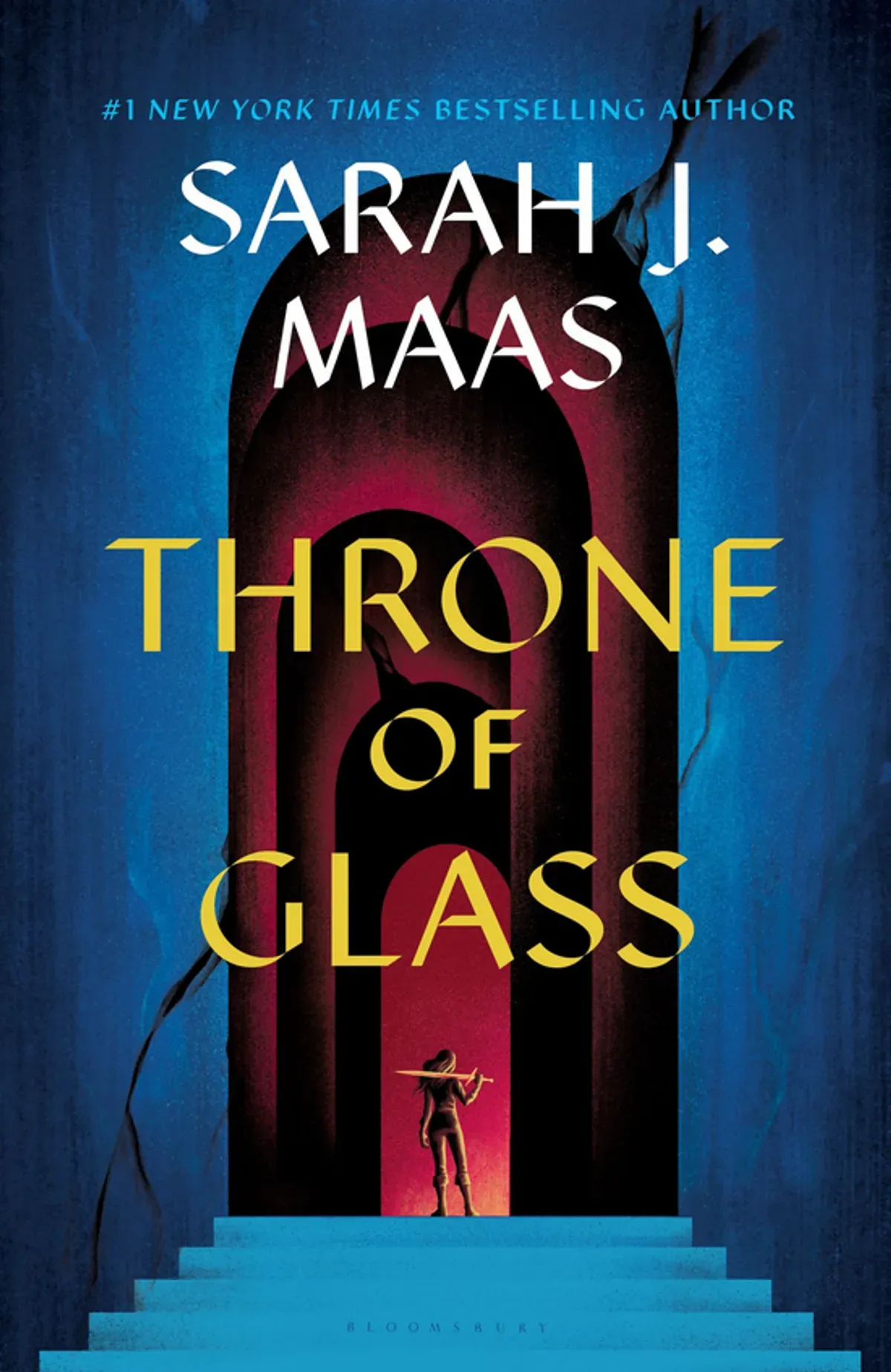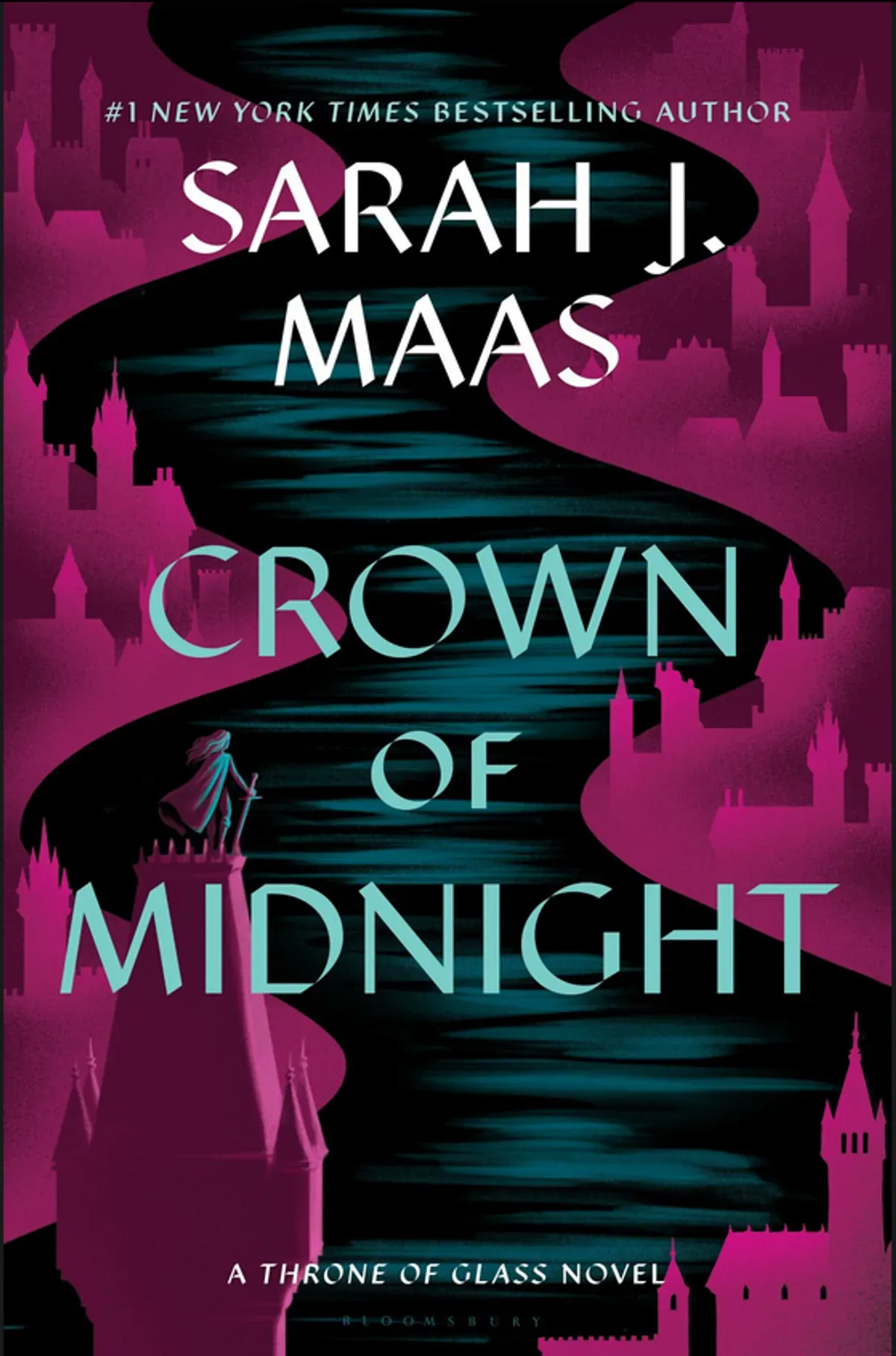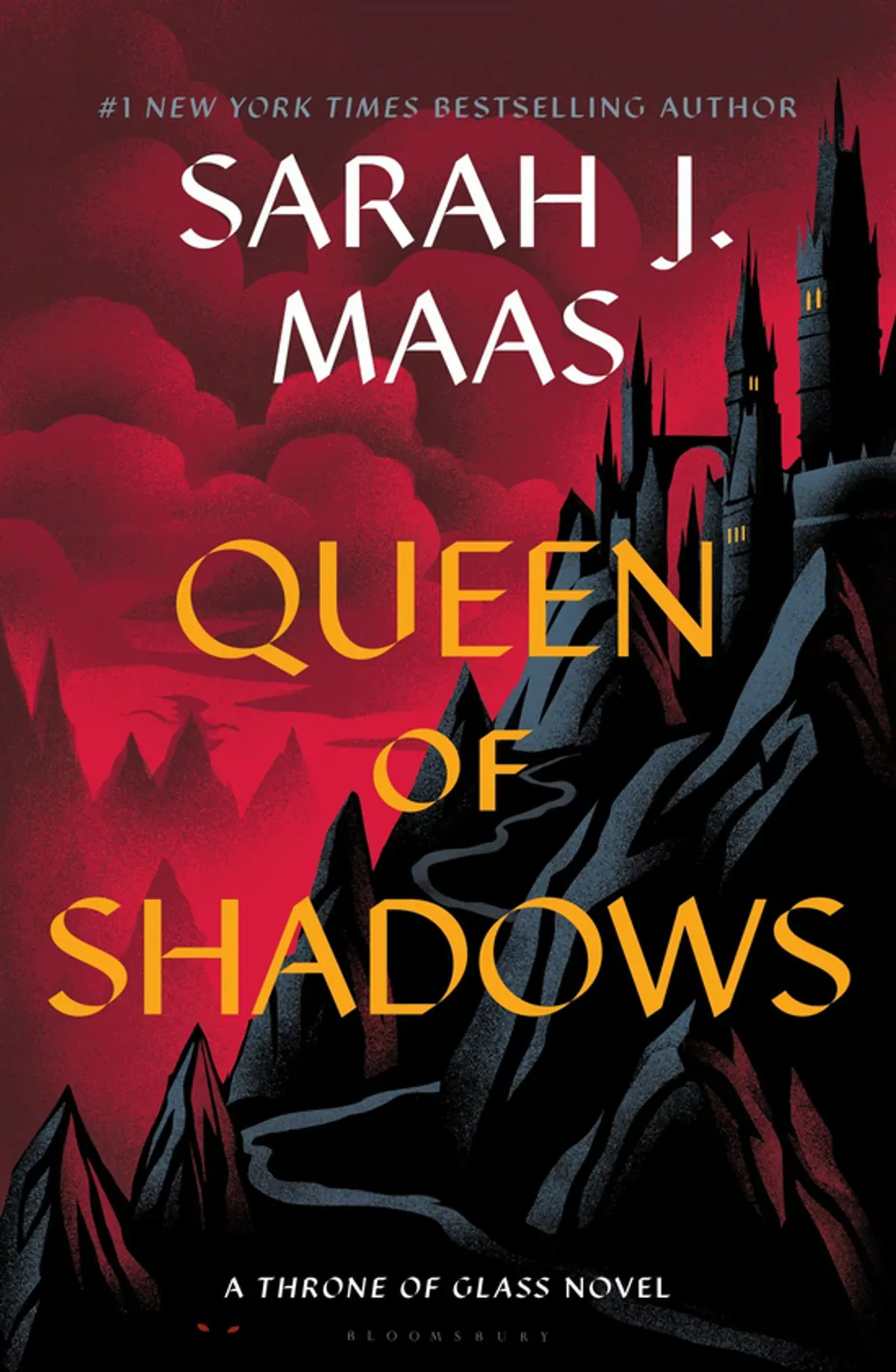Throne of Glass
by Sarah J. Maas
Reviewed by Devin Ford on March 28, 2025
Est. Reading Time: 16 min

Quick Info
Title: Throne of Glass
Author: Sarah J. Maas
Series: Throne of Glass (Book 1)
Published: August 7, 2012
ISBN-13: 9781599906959
At a Glance: The Assassin’s Tournament
In Throne of Glass, we meet Celaena Sardothien, a notorious teenage assassin who has spent a year in the brutal salt mines of Endovier as punishment for her crimes. When the Crown Prince offers her freedom in exchange for competing as his champion in a tournament to become the King’s Assassin, Celaena agrees, though she secretly loathes the tyrannical king she would serve. As competitors begin dying mysteriously during the contest, Celaena finds herself investigating dark forces at work in the glass castle. Caught between her growing attraction to both the Crown Prince and the Captain of the Guard, her determination to win her freedom, and the mysterious magical threat lurking in the castle, Celaena must navigate a political landscape where one misstep could mean her death.
A Limited World with Untapped Potential
The worldbuilding in Throne of Glass centers primarily on the glass castle where the competition takes place, with limited exploration of the broader kingdom of Adarlan or the conquered territories mentioned throughout the narrative. The setting feels somewhat contained, focusing on training rooms, competitors’ quarters, and the occasional ball or gathering that showcases the court’s opulence against the backdrop of conquered territories and suppressed magic.
While the history of conquest and the banning of magic are intriguing elements, they remain largely in the background of this first installment. References to the extermination of magical creatures and practitioners hint at a richer world beyond the castle walls but leave many questions unanswered. The various kingdoms mentioned—Terrasen (Celaena’s homeland), Eyllwe, and others—receive minimal development beyond serving as places of origin for certain characters.
The magic system remains particularly undefined in this opening volume. Magic has been banned by the King of Adarlan, but the nature and rules of this magic are only vaguely established through brief mentions and the mysterious deaths occurring during the tournament. This creates an air of mystery but also leaves the fantastical elements feeling somewhat disconnected from the more straightforward competition narrative.
For a debut novel written when Maas was just sixteen, these limitations are understandable, and there are enough interesting concepts—the competition structure, the hint of ancient magical threats, the political tensions between conquered nations—to suggest potential for expansion in subsequent books. However, readers seeking immersive worldbuilding with clear rules and detailed cultural exploration might find this initial offering somewhat sparse.
Characters: Promising Development Amid POV Challenges
Celaena Sardothien presents an interesting protagonist—an infamous assassin whose youth and vanity sometimes contrast jarringly with her deadly reputation. Her character contains compelling contradictions: she can be ruthlessly efficient yet enjoys fine clothes and books; she harbors deep trauma yet maintains a somewhat carefree facade. These tensions create an engaging character study, though her actual demonstrated skills sometimes feel told rather than shown in meaningful ways.
The supporting cast offers varied entry points into the story. Prince Dorian provides charm and political complexity as he navigates his role as heir to a tyrannical throne. Captain Chaol Westfall’s stern sense of duty creates effective friction with Celaena’s more rebellious nature. Princess Nehemia brings much-needed perspective from the conquered territories, though her character sometimes feels limited to serving as Celaena’s cultural educator.
Where the character writing stumbles is in the handling of multiple POVs. The transitions between perspectives can be abrupt, with insufficient differentiation in voice between viewpoint characters. This leads to occasional confusion and disrupts narrative flow, particularly in early chapters before readers have firmly established who’s who in this world.
The romantic elements develop slowly through the competition, with a love triangle forming between Celaena, Dorian, and Chaol. While the attractions feel somewhat predictable, they avoid overwhelming the main plot and help humanize Celaena beyond her assassin identity.
Character motivations become more complex as the story progresses, particularly in the final third when political machinations and hidden agendas begin to surface. These later developments provide much-needed depth to what initially appears to be a straightforward competition narrative.
Plot: A Slow Build to a Satisfying Conclusion
The plot of Throne of Glass follows a fairly standard competition structure—training montages, elimination rounds, rivalries, and sabotage—but adds mystery elements as competitors begin dying under mysterious circumstances. The pacing suffers in the middle sections where training sequences and court politics dominate without significantly advancing either the competition or the mystery.
Where the narrative gains strength is in its final third, when the various plot threads—the competition, the mysterious deaths, court politics, and ancient magic—begin converging in satisfying ways. The stakes escalate effectively as Celaena’s investigation reveals connections to larger threats against the kingdom, elevating the story beyond merely winning the tournament.
The resolution delivers appropriate payoff for the mystery elements while setting up longer-term conflicts that clearly position this as the first installment in a larger series. Some plot developments rely heavily on convenient timing or unexplained abilities, but the overall arc concludes with enough satisfaction to justify the sometimes uneven journey.
For readers accustomed to the more polished pacing of Maas’s later works like A Court of Thorns and Roses, the plotting in Throne of Glass may feel less assured, with sections that drag and others that rush important developments. However, there’s a promising narrative foundation being laid that hints at the more expansive storytelling Maas would later develop.
Prose: A Writer Finding Her Voice
The prose in Throne of Glass reflects its origins as a debut novel written by a teenage author. While generally accessible and effective at conveying action and emotion, the writing sometimes lacks the polish and distinctive voice that characterizes Maas’s later work. Descriptions can alternate between sparse functionality and occasional overwrought passages, particularly in emotional or romantic scenes.
Dialogue serves its purpose in advancing plot and revealing character, though it sometimes falls into expository patterns where characters explain things they all should already know for the reader’s benefit. The banter between Celaena and both of her potential love interests provides some of the more natural conversational moments.
Action sequences demonstrate potential, with the training and competition scenes generally well-executed. These moments showcase Maas’s developing strength in creating tension through physical confrontation, a skill that would become more refined in her subsequent books.
The handling of multiple POVs presents the biggest stylistic challenge, with transitions between viewpoint characters sometimes occurring abruptly within chapters, creating momentary confusion about whose perspective we’re following. This improves as the novel progresses, suggesting a writer developing greater control of her craft even within this single volume.
At a Glance: The Assassin’s Tournament
Throne of Glass introduces us to Celaena Sardothien who became a notorious teenage assassin after enduring a year in the harsh salt mines of Endovier for her criminal actions. Despite her deep hatred for the tyrannical king she would serve, Celaena accepts the opportunity for freedom from the Crown Prince to compete as his champion in a tournament that aims to appoint the new King’s Assassin. Celaena starts examining the sinister forces functioning within the glass castle after her competitors begin dying under mysterious circumstances. Celaena finds herself torn between her increasing feelings for the Crown Prince and the Captain of the Guard while she strives to attain freedom and faces a mysterious magical danger within the castle walls yet she must tread carefully through a treacherous political environment where any error may lead to her demise.
A Limited World with Untapped Potential
In Throne of Glass the worldbuilding focuses mostly on the glass castle where the competition unfolds and only briefly touches upon the kingdom of Adarlan and its conquered territories. The setting remains mostly restricted to training spaces and competitors’ living areas with rare social events that display the court’s lavishness against the defeated lands and forbidden magic.
The background story of conquest and the prohibition of magic stands as an interesting feature yet stays mostly hidden within this introductory book. The extermination of magical creatures and practitioners suggests a more complex world exists outside the castle but provides few answers to its mysteries. Terrasen (Celaena’s homeland), Eyllwe and other kingdoms only function as character origins without extensive narrative development.
This initial volume of the series leaves the magic system largely undefined. King of Adarlan has outlawed magic yet its fundamental principles and regulations remain obscure due to limited exposition and the enigmatic fatalities at the tournament. The narrative generates an intriguing aura of mystery yet separates the magical aspects from the main competitive storyline.
Given that Maas wrote this debut novel at sixteen years old these limitations become evident but intriguing elements like the competition structure and the ancient magical threats show potential for future books. Those who desire extensive worldbuilding through defined rules and thorough cultural details may discover this first installment lacking.
Characters: Promising Development Amid POV Challenges
Celaena Sardothien stands out as a captivating protagonist who is a renowned assassin and whose youthful appearance and vanity sharply contrast her notorious reputation. Her character contains compelling contradictions: Her ability to be ruthlessly efficient contrasts with her love for fine clothes and books while she hides deep trauma behind a carefree facade. The tensions in her character portrayal drive an interesting study of her persona although her skills occasionally lack vivid demonstration and rely more on description.
The supporting characters create multiple perspectives to enter the story. As heir to a harsh royal seat Prince Dorian displays both his charismatic nature and intricate political maneuvers. The strict discipline that defines Captain Chaol Westfall stands in conflict with Celaena’s rebellious behavior. Princess Nehemia offers critical insights into conquered lands yet her role feels restricted to teaching Celaena about cultural differences.
The character writing shows weaknesses when dealing with multiple point-of-view perspectives. Perspective shifts occur suddenly while viewpoint characters lack distinct voices. The frequent shifts between different viewpoints create confusion which disrupts the narrative flow until readers become familiar with the characters in the initial chapters.
As the competition unfolds the romantic theme takes shape gradually which results in a love triangle involving Celaena alongside Dorian and Chaol. Despite their predictable nature the romantic elements remain secondary to the main story yet they successfully serve to reveal Celaena’s human side beyond her assassin persona.
The complexity of character motivations increases throughout the story while the final third reveals political schemes and concealed intentions. The story evolves to gain essential layers of complexity beyond its initial simple competition story.
Plot: A Slow Build to a Satisfying Conclusion
The story structure of Throne of Glass relies on usual competition elements like training montages and elimination rounds while incorporating mystery aspects as competitors start dying mysteriously. The narrative slows during the middle chapters because lengthy training scenes and political maneuvering fail to move the tournament or mystery forward.
The narrative becomes powerful during its concluding part when all different story lines merge together in fulfilling ways. Celaena’s investigation leads to discovering connections to significant threats against the kingdom which raises the stakes beyond just winning the tournament.
The resolution provides a fitting conclusion to the mystery elements while establishing future conflicts that mark this book as the initial chapter of a broader series. Multiple plotlines depend on convenient timing or mysterious skills yet the story ends with satisfactory closure despite the uneven progression.
Readers who enjoy the refined pacing of Maas’s later series including A Court of Thorns and Roses might find the plot of Throne of Glass feels inconsistent because some parts drag too much and important events get rushed. The foundation of the narrative in development reveals the potential for the expansive storytelling that Maas would later achieve.
Prose: A Writer Finding Her Voice
The writing style of Throne of Glass demonstrates its beginnings as an inaugural work by a youthful writer. Although readers will find the prose accessible and successful at depicting action and emotion it lacks the refined style and unique voice found in Maas’s subsequent books. The writing shows inconsistent description styles that range from minimal functionality to overly dramatic language during emotional and romantic segments.
Character dialogue helps move the plot forward while revealing personalities but occasionally becomes expository as characters state known facts to inform the reader. Celaena’s exchanges with her two possible love interests create some of the most genuine dialogue moments.
The action scenes show promise through their well-executed training and competition sequences. Maas demonstrates her growing ability to create tension through physical confrontations which she continues to refine in her later books.
Multiple POVs create the largest stylistic obstacle because the shifts between viewpoint characters can happen suddenly within chapters which leads to brief confusion about the current perspective. The narrative demonstrates enhanced control as the story unfolds which shows the author mastering her writing abilities throughout this particular book.
Between the Sheets: Romance Takes a Back Seat
BroMantasy Spice Rating
Barely There
(Chaste Romance)
The romantic content of Throne of Glass remains minimal with a spice level of 🌶️ (1.0) when compared to Maas’s subsequent books. The romance elements center around building attractions without intimate encounters which suits younger audiences or readers who enjoy fantasy novels with romantic elements but no explicit scenes.
The emerging romantic triangle of Celaena with Prince Dorian and Captain Chaol advances their personal growth through important character interactions instead of physical closeness. The romance grows through perilous situations, brain-to-brain connections and increasing trust as characters let their hidden vulnerabilities surface beneath their outward personas.
The limited romantic content in Throne of Glass may seem restrained to readers acquainted with Maas’s A Court of Thorns and Roses series yet works well with the younger protagonist and the plot’s competitive and mysterious aspects.
Bro Reading Comfort: Completely Safe Territory
The book Throne of Glass receives a 😳 (1.0) rating for public reading because it contains no content that prevents readers from comfortably sharing it in public spaces. This book allows you to read it in any public place without concern about stumbling upon explicit scenes or uncomfortable situations. The book contains romance but maintains its focus on attraction and mild flirtation instead of explicit scenes.
The book design and narrative make it clear that this work belongs to young adult fantasy with romantic elements instead of romantasy thus providing an accessible start for readers who prefer less romance-focused stories. The cover design displays a hooded assassin which helps indicate the book belongs to its primary genre category.
Darkness That Establishes Stakes
Throne of Glass presents readers with a world where actual dangers and consequences exist due to its darkness factor of 💀💀 (2.0). At the start of the story readers discover Celaena endured a year working in the brutal Endovier mines where most prisoners died within just months. The competition carries deadly stakes because champions who lose may face execution instead of simple elimination.
Horror elements arise when competitors in the tournament die horrifically yet the depiction of their deaths stays less explicit compared to adult fantasy novels. The oppressive political environment involving conquest and tyrannical magic suppression presents characters with serious dangers beyond their contest challenges.
The muted darkness stems from Celaena’s contrast between her notorious assassin reputation and the minimal demonstration of her deadly past. The narrative mentions her traumatic past yet seldom delivers emotional insights into the experiences that formed her character. The narrative transforms a potentially grim character exploration into a more sanitized account.
Book Battlefield: Debut Compared to Later Mastery
When readers experience Maas’s later works before Throne of Glass they can identify both the foundational elements of her narrative talent and observe the author’s subsequent development. This debut novel demonstrates the evolving skill of an author still learning her voice alongside worldbuilding and pacing which becomes more polished in A Court of Thorns and Roses and magic systems and political intricacies which develop in later Throne of Glass installments.
Fans who start with Throne of Glass after enjoying Maas’s later series might experience a shock when they compare the two works. The writing demonstrates less assuredness and individuality than what Maas achieved in later works while the worldbuilding seems more restricted. The knowledge that this work was authored by Maas when she was sixteen years old and served as her debut novel helps to explain these literary differences.
Although not groundbreaking within its category, Throne of Glass remains a commendable young adult fantasy novel of its time because its assassin hero and contest format deliver standard genre elements with enough unique touches to separate it from other similar stories. The foundation of Maas’s trademark narrative elements including powerful female leads and intricate political settings alongside romantic storylines began to take shape in this work although they were not fully developed.
Should You Bother?
For Maas Fans: An appreciation for Sarah J. Maas’s subsequent novels like A Court of Thorns and Roses or Crescent City will be enhanced by reading Throne of Glass while acknowledging its origins as her first book. Reading this work allows you to trace the development of themes and storytelling techniques that Maas later perfected in her subsequent books.
For Fantasy Readers: The developing mystery alongside the competition structure provides captivating aspects despite the limited worldbuilding. Readers who love hidden identities, court intrigue, and deadly competitions will find enough compelling material to warrant their time because it’s the beginning of a larger series.
For Young Adult Readers: Teen readers who enjoy fantasy novels about assassins and competitions will find this book accessible due to its younger main character and uncomplex storytelling along with minimal romantic elements.
Final BroMantasy Verdict
This first book by an emerging fantasy author demonstrates a promising yet inconsistent start that reveals her budding potential to influence the genre. This book functions as the foundational text of a series that expands into greater complexity by establishing main characters and their conflicts and introducing elements of the larger world and magic system for future volumes to develop.
To fully appreciate this book readers must understand its origins as the first published work of a teenage author. The book achieves balance between its pacing problems and underdeveloped worldbuilding with strong character relationships and a compelling tournament plot containing mysterious elements.
The early development of storytelling elements in Throne of Glass makes it worth reading despite its limitations because they become more thoroughly developed in Maas’s later works. A foundational understanding of the series emerges for readers who wish to follow the author’s progression or when they choose to read from the start. Readers searching for Maas’s most refined writing should start with her later series to experience greater immediate satisfaction.
The book’s closing section provides substantial resolution which confirms the value of continuing with this series due to the convergence of plot threads and unforeseen depth in character motivations. Though it doesn’t reach the excellence of Maas’s future publications, Throne of Glass shows enough potential to explain why it sparked Maas’s successful fantasy writing career.
You Might Also Enjoy
Frequently Asked Questions
Is this book part of a series?
Yes, this is book 1 in the Throne of Glass series.
How spicy is the romance?
We rate the spice level at 🌶️ (1/5). Minimal romantic content focused more on attraction than intimate encounters
How uncomfortable is it to read in public?
We rate the public reading discomfort level at 😳 (1/5). No content that would cause reading discomfort in public spaces
How dark are the themes in this book?
We rate the darkness level at 💀💀 (2/5). Mentions of slavery, imprisonment, and murder create genuine stakes without graphic detail
What age group is this book for?
This book is generally recommended for adult readers due to its mature themes. We recommend checking specific content warnings if you are sensitive to certain topics.





